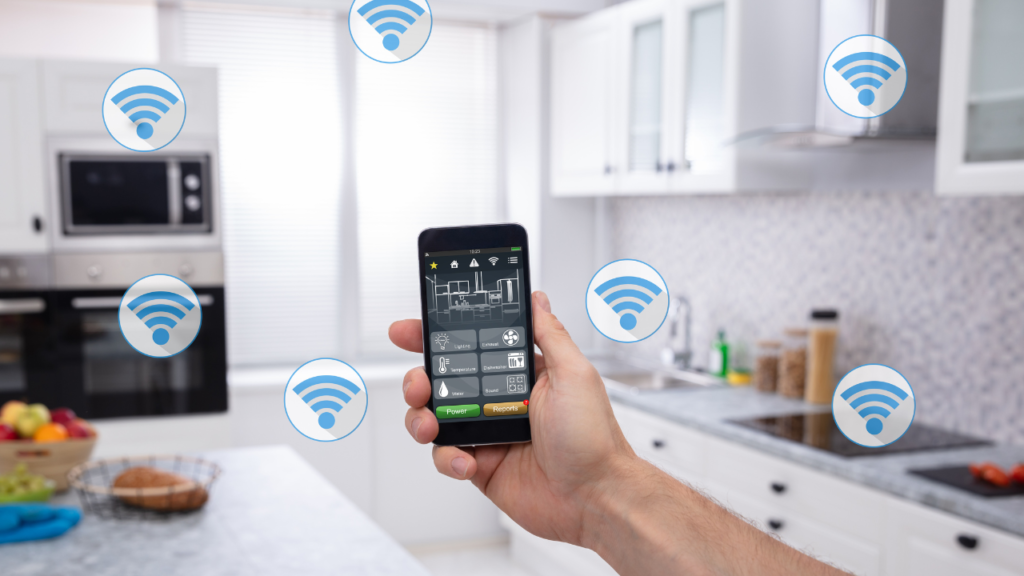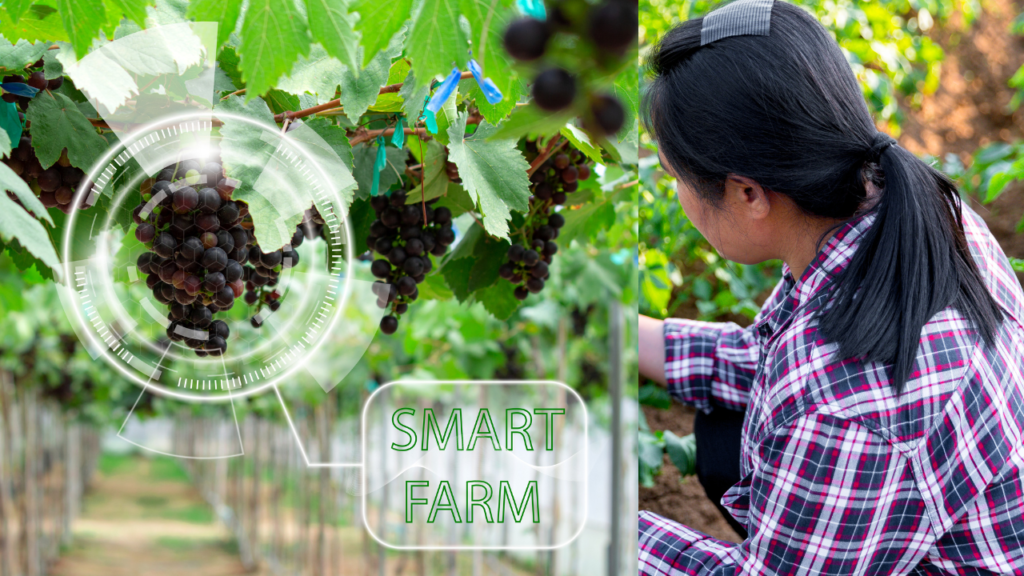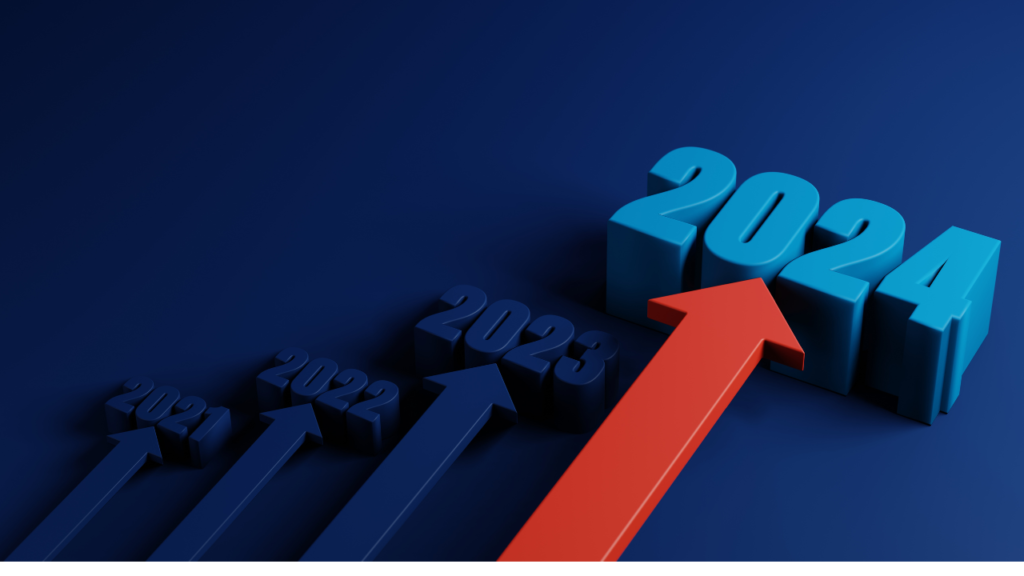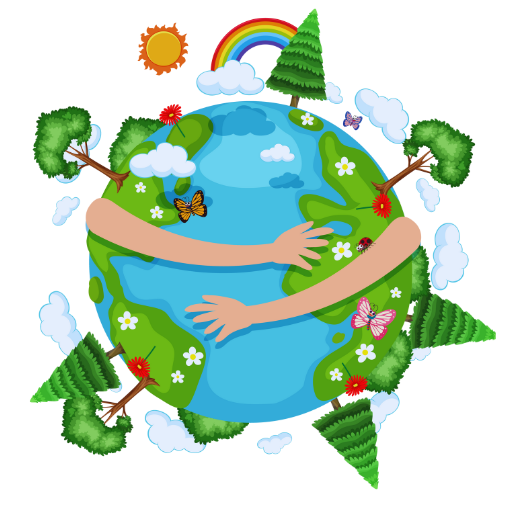Sustainable Living 2.0 Innovation and Trends
In an era defined by environmental consciousness, the future of sustainable living holds both challenges and exciting possibilities, with a potential shift towards a more harmonious relationship between humans and the planet. From groundbreaking innovations to evolving trends, individuals worldwide are embracing a lifestyle that not only supports the well-being of the planet but also promises a more harmonious coexistence.

Table of Contents
The Future of Eco-Friendly Living: Innovations and Trends
In this blog post, we’ll delve into the exciting innovations and trends shaping the future of sustainable living, backed by insightful statistics and real-life examples.
Technological Innovations
Renewable energy dominance
Renewable energy dominance refers to the increasing prevalence and widespread adoption of renewable energy sources in meeting the world’s energy needs. This shift is integral to the future of sustainable living for several reasons:

1. Environmental Sustainability:
- Renewable energy sources, such as solar, wind, hydro, and geothermal power, produce electricity with significantly lower environmental impact compared to traditional fossil fuels. They produce fewer greenhouse gas emissions, helping to mitigate climate change and reduce air pollution.
2. Resource Availability and Energy Security:
- Unlike finite fossil fuels, renewable energy sources are abundant and widely distributed. This decentralization of energy production reduces dependence on specific regions or countries for energy resources, contributing to global energy security.
3. Climate Change Mitigation:
- The dominant use of renewable energy is crucial for reducing the global carbon footprint. By transitioning away from fossil fuels, we can mitigate the impact of climate change, which is essential for ensuring a sustainable and habitable planet for future generations.
4. Economic Benefits:
- The renewable energy sector has become a significant driver of economic growth, job creation, and technological innovation. As the industry expands, it stimulates investment, fosters innovation, and creates employment opportunities in various regions.
5. Energy Independence:
- Relying on renewable energy sources allows nations to become more energy independent by harnessing their domestic resources. This reduces vulnerability to geopolitical tensions related to traditional energy sources and enhances overall energy resilience.
6. Technological Advancements:
- The growing dominance of renewable energy encourages research and development in clean energy technologies. This leads to advancements in energy storage, grid integration, and efficiency, making renewable energy sources more reliable and competitive.
7. Decentralization of Energy Production:
- Renewable energy systems often allow for decentralized energy production, such as rooftop solar panels or small-scale wind turbines. This decentralization enhances the resilience of energy infrastructure and reduces the risk of large-scale disruptions.
8. Cost Competitiveness:
- Over time, the cost of renewable energy technologies has decreased significantly, making them increasingly competitive with traditional fossil fuels. As the cost continues to decline, renewable energy becomes a financially viable and attractive option for individuals, businesses, and governments.
9. Community Engagement:
- Renewable energy projects often involve local communities, fostering a sense of ownership and engagement. Community-based renewable projects can provide economic benefits and empower people to actively participate in the transition to sustainable living.
In summary, the dominance of renewable energy is a key component of the future of sustainable living, offering environmental, economic, and social benefits. The ongoing transition to renewable energy sources is essential for addressing climate change, ensuring energy security, and promoting a more sustainable and resilient global society.
Data Showing The Rising Adoption Of Renewable Energy
Did You Know?
As of 2022, renewable energy accounted for an impressive 26.2% of global electricity generation, highlighting its increasing importance in meeting the world’s energy needs. This substantial contribution demonstrates the progress made in transitioning towards cleaner and more sustainable energy sources.

Among the various renewable energy sources, solar and wind power stand out as the leading contributors. Solar power, in particular, has experienced remarkable growth, surpassing other renewable sources in terms of expansion and adoption. This growth can be attributed to advancements in solar technology and increased investment in solar energy projects.
Global investment in renewable energy reached a staggering $333.4 billion, indicating a strong commitment towards a sustainable future. This investment not only supports the expansion of renewable energy infrastructure but also stimulates economic growth and job creation.
Source :- International Renewable Energy Agency (IRENA)
Smart homes and cities:
Smart homes and cities are integral components of the future of sustainable living, leveraging advanced technologies to enhance efficiency, reduce resource consumption, and improve overall quality of life. These concepts involve the integration of Internet of Things (IoT), automation, data analytics, and connectivity to create intelligent and responsive environments. Here’s how they contribute to the future of sustainable living:

Smart Homes:
1. Energy Efficiency:
- Smart homes use sensors and automation to optimize energy usage. For instance, lights, heating, and cooling systems can be controlled based on occupancy, reducing unnecessary energy consumption.
2. Resource Management:
- Connected devices enable efficient management of resources like water. Smart irrigation systems, water sensors, and smart appliances help minimize waste and enhance resource conservation.
3. Renewable Energy Integration:
- Smart homes often integrate renewable energy sources such as solar panels and smart energy storage solutions. This helps reduce reliance on non-renewable energy and lower carbon footprints.
4. Home Automation for Convenience and Efficiency:
- Automation systems allow residents to control various aspects of their homes remotely. This includes adjusting temperature, monitoring security, and managing appliances, leading to more efficient use of resources.
5. Health and Comfort:
- Smart homes enhance occupants’ well-being by monitoring indoor air quality, controlling humidity, and creating personalized environments for optimal comfort.
Smart Cities:
Did You Know? Freiburg City in Germany is know as the sustainable city in the world.

1. Urban Planning and Infrastructure:
Smart cities employ data analytics and real-time information to optimize urban planning, transportation, and infrastructure. This helps in reducing traffic congestion, improving public transportation, and enhancing overall efficiency.
2. Waste Management:
IoT-enabled waste management systems allow for efficient waste collection and recycling. This reduces the environmental impact of urban waste and promotes a circular economy.
3. Air Quality Monitoring:
Smart cities monitor air quality in real-time, providing valuable data for pollution control measures. This leads to healthier living conditions and reduced environmental impact.
4. Efficient Transportation:
Connected transportation systems, including smart traffic lights and autonomous vehicles, help optimize traffic flow, reduce fuel consumption, and lower emissions.
5. Community Engagement:
Smart cities often promote citizen engagement through digital platforms, encouraging participation in sustainability initiatives and providing information on energy conservation, waste reduction, and environmental awareness.
Precision agriculture:
Precision agriculture is an advanced farming approach that utilizes technology to optimize various aspects of the agricultural process. The primary goal is to maximize efficiency, productivity, and sustainability in crop production while minimizing waste and environmental impact. Precision agriculture involves the integration of various technologies, data analytics, and sensors to make informed and timely decisions in farming practices.

In the context of the future of sustainable living, precision agriculture plays a crucial role in addressing several key challenges:
RELATED :- Composting from Kitchen Waste
1. Resource Efficiency:
Precision agriculture allows farmers to precisely apply inputs such as water, fertilizers, and pesticides based on real-time data and specific crop needs. This targeted approach reduces resource wastage and minimizes the environmental impact associated with excessive use of inputs.
2. Data-Driven Decision Making:
The collection and analysis of data from sensors, satellites, and other sources enable farmers to make informed decisions about planting, irrigation, and harvesting. This data-driven approach helps optimize agricultural processes, improve yields, and reduce the overall environmental footprint of farming operations.
3. Remote Sensing and Monitoring:
Technologies such as satellite imaging and drones are used for remote sensing and monitoring of crop health, soil conditions, and pest infestations. This allows for early detection of potential issues, enabling farmers to take preventive measures and reduce the need for reactive and often environmentally harmful interventions.
4. Preservation of Biodiversity:
Precision agriculture can help in creating landscapes that support biodiversity by minimizing the impact of agricultural activities on natural ecosystems. By optimizing the use of land and resources, precision agriculture aims to balance the needs of food production with the conservation of natural habitats.
5. Reduced Environmental Impact:
Precision agriculture practices, such as no-till farming and controlled-release fertilizers, contribute to soil conservation and reduced runoff of agrochemicals into water bodies. This helps in maintaining soil health, preventing water pollution, and promoting long-term sustainability.
6. Climate Change Adaptation:
Precision agriculture allows farmers to adapt to changing climatic conditions by adjusting planting schedules, selecting suitable crop varieties, and implementing climate-smart practices. This adaptability is crucial for ensuring food security in the face of climate change.
7. Economic Viability:
By optimizing resource use and improving yields, precision agriculture contributes to the economic sustainability of farming operations. This, in turn, supports the livelihoods of farmers and ensures a stable and resilient food supply.
In summary, precision agriculture is a key component of the future of sustainable living as it promotes efficient and environmentally conscious farming practices. By harnessing technology and data, precision agriculture helps strike a balance between agricultural productivity and environmental stewardship, contributing to a more sustainable and resilient food system for future generations.
Circular economy:
The circular economy is a concept that aims to redefine our traditional linear economic model of “take, make, dispose” into a more sustainable and regenerative one. In a circular economy, resources are used efficiently, and waste is minimized by keeping products, materials, and resources in a continuous loop of reuse, refurbishment, remanufacturing, and recycling. This approach contrasts with the linear economy, where products are produced, consumed, and then discarded as waste.

In the context of the future of sustainable living, the circular economy plays a crucial role in addressing environmental challenges, reducing resource depletion, and promoting long-term economic resilience. Here are some key aspects of how the circular economy contributes to sustainable living:
1. Resource Efficiency:
Circular economy principles prioritize the efficient use of resources by extending the lifespan of products and materials. This reduces the need for extracting new raw materials and minimizes the environmental impact associated with resource extraction.
2. Waste Reduction:
The circular economy aims to minimize waste generation by promoting practices such as recycling, reusing, and remanufacturing. This not only reduces the amount of waste ending up in landfills but also decreases the environmental pollution caused by waste disposal.
3. Product Life Extension:
Instead of designing products with planned obsolescence, the circular economy encourages the creation of durable and repairable goods. This extends the lifespan of products, reducing the frequency of replacements and lowering the overall environmental footprint.
4. Closed-Loop Systems:
Circular economy systems focus on creating closed-loop processes where materials are continuously circulated within the system. This minimizes the need for new raw materials, promotes resource conservation, and decreases the environmental impact associated with extraction and processing.
5. Innovation and Design:
Circular economy principles drive innovation in product design, encouraging the development of products that are easily disassembled, repaired, and upgraded. Designing with the end of life in mind ensures that products can be efficiently recycled or reintegrated into the production process.
RELATED :- Circular Fashion for a better world.
6. Economic Opportunities:
The circular economy creates new economic opportunities by fostering the growth of industries related to recycling, remanufacturing, and repair. It encourages the development of a more resilient and diversified economy that is less dependent on scarce resources.
As the world faces increasing challenges related to climate change, resource scarcity, and environmental degradation, the circular economy represents a holistic approach to sustainable living. By reimagining our economic systems and consumption patterns, the circular economy provides a pathway toward a more resilient and environmentally friendly future.
Trends Shaping Sustainable Living:

1. Minimalism and Conscious Consumerism:
A shift towards minimalism and conscious consumerism is steering individuals away from the culture of excess. People are opting for quality over quantity, choosing products with longevity and ethical sourcing.
Example: The minimalist lifestyle movement has contributed to a 30% decrease in overall household waste in certain communities.
2. Remote Work and Sustainable Lifestyles:
The rise of remote work is influencing where and how people choose to live. This shift has led to a reevaluation of transportation needs, reducing the carbon footprint associated with daily commutes.
Example: Remote work has the potential to save an estimated 11 billion gallons of gas annually in the United States alone.
3. Renewable Energy Adoption:
The increasing adoption of renewable energy sources, such as solar and wind power, is a key trend in sustainable living. Communities and individuals are investing in clean energy alternatives to reduce dependency on non-renewable resources.
Example: In 2022, renewable energy accounted for 26.2% of global electricity generation, a significant increase from previous years.
Related :- Reasons to follow sustainable living
Challenges and Solutions of Sustainable Living
While the future of sustainable living is promising, challenges persist. These include:
1. Affordability and Accessibility:
- Challenge: Sustainable products and technologies can be more expensive, limiting access for certain demographics.
- Solution: Government incentives, subsidies, and increased competition can drive down costs over time.
Related :- Data Showing Sustainable Living is affordable in America
2. Technological Barriers:
- Challenge: Not everyone has access to the latest sustainable technologies.
- Solution: Continued research, development, and government support can help bridge the technological divide.
3. Behavioral Change:
- Challenge: Adapting to a sustainable lifestyle requires a shift in mindset and habits.
- Solution: Education, community initiatives, and policy changes can promote widespread behavioral change.
The Personal Impact of Sustainable Living
Embarking on a sustainable living journey is a transformative experience. Individuals often report:
- Fulfillment and Purpose: Adopting a sustainable lifestyle provides a sense of purpose and fulfillment, knowing that personal choices contribute to a healthier planet.
- Financial Savings: While some sustainable products may have higher upfront costs, the long-term savings become apparent through reduced energy bills and less frequent replacements.
- Improved Well-being: Connection with nature, reduced exposure to harmful chemicals, and conscious living contribute to improved mental and physical well-being.
Frequently Asked Questions:
What is sustainable living?
Sustainable living refers to a lifestyle that aims to reduce an individual’s or community’s ecological footprint by making environmentally responsible choices in daily life. It involves adopting practices that promote long-term environmental health and social responsibility.
Why is sustainable living important for the future?
Sustainable living is crucial for the future as it addresses environmental challenges, conserves resources, and mitigates climate change. By adopting sustainable practices, we can create a more resilient and balanced world for future generations.
What are some key innovations in sustainable energy?
Innovations in sustainable energy include advancements in solar and wind technologies, energy storage solutions, smart grids, and the development of new bioenergy sources. These innovations aim to replace traditional, fossil-fuel-based energy sources with cleaner alternatives.
How can smart technology contribute to sustainable living?
Smart technology can optimize resource use and reduce waste through applications like smart homes, energy-efficient appliances, and intelligent transportation systems. These innovations enhance energy efficiency and contribute to more sustainable living practices.
What role do circular economies play in sustainable living?
Circular economies prioritize the reuse, recycling, and repurposing of products and materials. This approach minimizes waste, conserves resources, and promotes a more sustainable consumption pattern, reducing the environmental impact of our lifestyles.
How are green buildings contributing to sustainable living?
Green buildings incorporate eco-friendly design, energy-efficient systems, and sustainable materials to minimize their environmental impact. Features such as solar panels, efficient insulation, and rainwater harvesting contribute to reduced energy consumption and overall sustainability.
Can sustainable agriculture address food security issues?
Sustainable agriculture focuses on environmentally friendly farming practices, minimizing chemical inputs, and promoting biodiversity. By adopting such practices, we can ensure long-term food security, healthier ecosystems, and resilient farming systems.
What are some emerging trends in sustainable transportation?
Emerging trends in sustainable transportation include electric vehicles, shared mobility services, and the development of infrastructure to support non-motorized transportation like cycling and walking. These trends aim to reduce carbon emissions and alleviate the environmental impact of traditional transportation methods.
How can individuals contribute to sustainable living on a daily basis?
Emerging trends in sustainable transportation include electric vehicles, shared mobility services, and the development of infrastructure to support non-motorized transportation like cycling and walking. These trends aim to reduce carbon emissions and alleviate the environmental impact of traditional transportation methods.
How can individuals contribute to sustainable living on a daily basis?
Individuals can contribute to sustainable living by adopting energy-efficient practices, reducing waste, choosing sustainable products, supporting local and eco-friendly businesses, and being mindful of their ecological footprint in daily activities.
What challenges does the future of sustainable living face?
Challenges include the need for widespread adoption of sustainable practices, overcoming resistance to change, addressing economic and policy barriers, and ensuring equitable access to sustainable solutions. Collaboration and innovation are crucial to overcoming these challenges for a more sustainable future.
Conclusion:
As we stand on the cusp of a sustainable future, the innovations and trends shaping our world are both inspiring and attainable. By overcoming challenges and embracing change, individuals can lead fulfilling lives while contributing to a healthier, more sustainable planet.
For a thorough guide and additional resources, check out our primary page on We Care Earth , This central hub acts as a valuable source, providing information, tools, and community support to empower individuals to take meaningful steps in reducing their environmental impact.
References:
“Explore the fascinating world of sustainable living and revolutionary innovations shaping our future at WorldNoor Blog. Discover the trends paving the way for a greener and more sustainable tomorrow!”
Further Reference
- International Energy Agency. “Smart Grids.”
- Patagonia. “Worn Wear.”
- United Nations. “Vertical Farming Report.”
- The Minimalists. “A Minimalist’s Guide to Saving Money.”
